Removal Procedure
Use only double wrapped and brazed steel tubing, if replacement of the transmission oil cooler pipes is required. Ensure that the tubing is double flared and meets GM Specification 123 M, or equivalent.
Notice: Allow sufficient clearance around transmission oil cooler pipes in order to prevent damage or wear which may cause fluid loss.
- Remove the upper transmission pipe at the radiator.
- Remove the oil cooler pipe hold down clamp at the front crossmember.
- Raise the vehicle. Refer to Section 0A.
- Support the vehicle with safety stands.
- Remove the cross braces, if equipped. Refer to Section 10-3.
- Remove the exhaust system. Refer to General Exhaust System Replacement in Engine Exhaust.
- Remove the lower transmission pipe at the radiator.
- Remove the oil cooler pipe lower hold down clamps.
- Remove the lower and upper oil cooler pipes at the transmission.
- Remove the upper and lower oil cooler pipes.
Important: If the transmission oil cooler pipe(s) requires repair, always check the flow rate after the repair is made. Refer to Automatic Transmission Oil Cooler Flushing
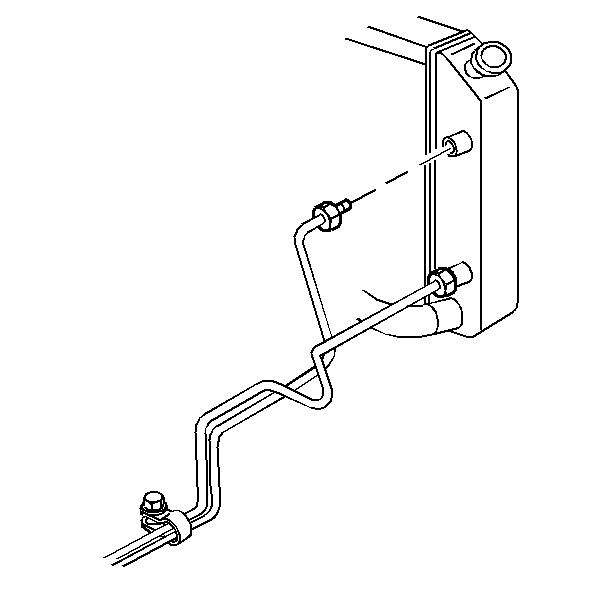
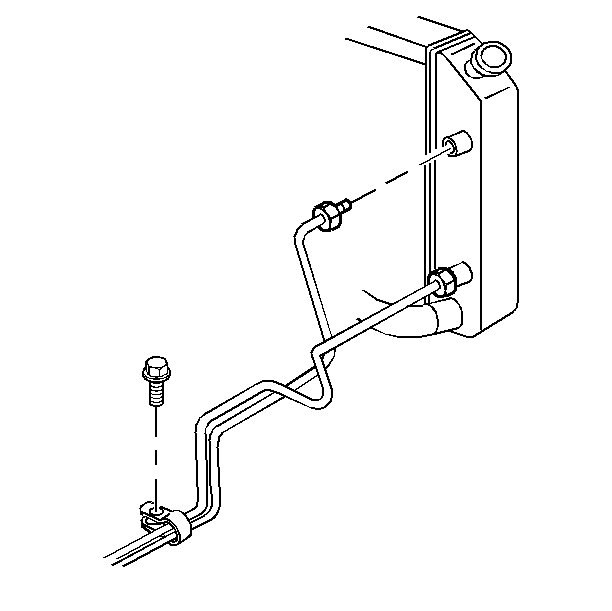
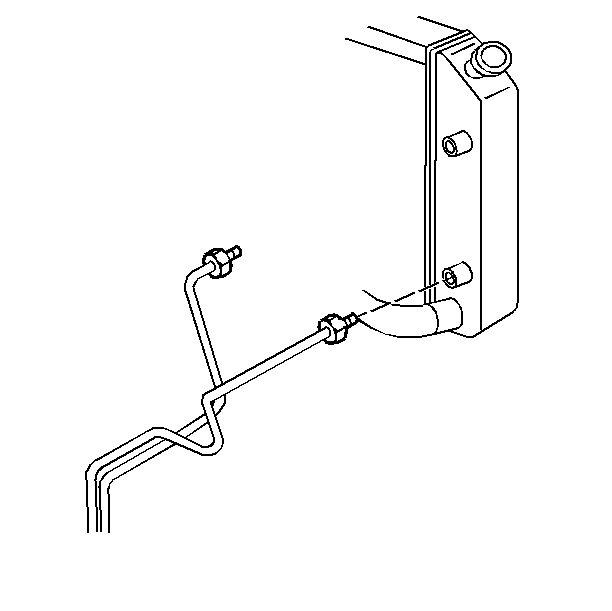
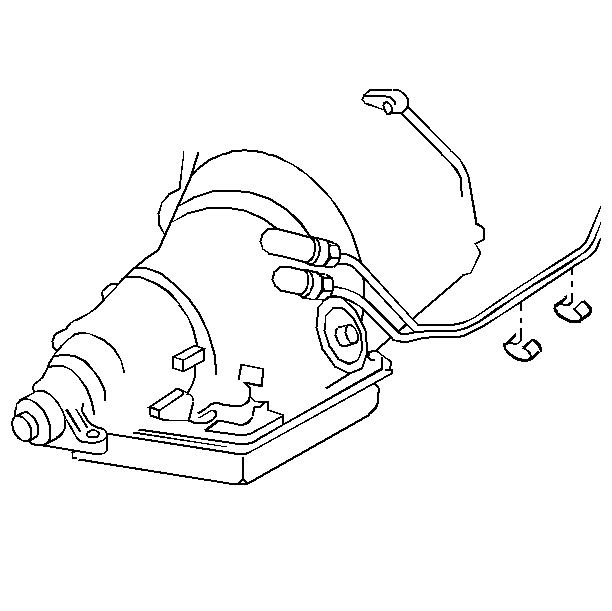
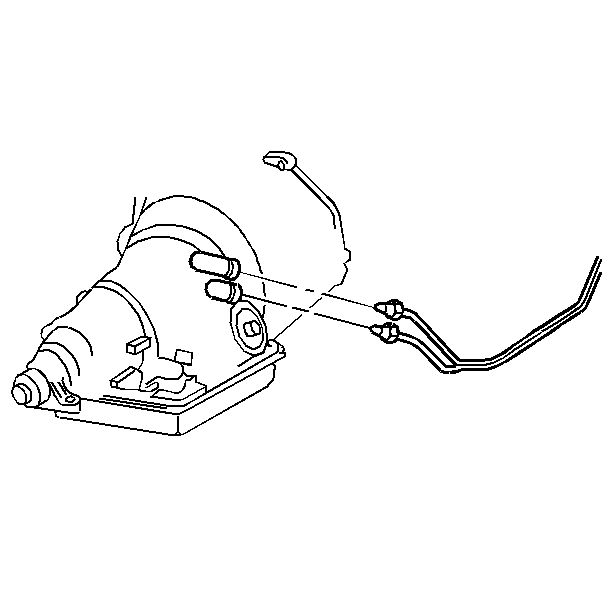
Installation Procedure
- Install the upper and lower oil cooler pipes. Bend to fit.
- Install the oil cooler pipes to the transmission.
- Install the oil cooler pipes lower and the hold down clamps.
- Install the lower oil cooler pipe to the radiator.
- Install the exhaust system. Refer to General Exhaust System Replacement in Engine Exhaust.
- Install the underbody braces, if equipped. Refer to Section 10-3.
- Lower the vehicle.
- Install the oil cooler pipe hold down clamp to the crossmember.
- Install the upper oil cooler pipe tubing to the transmission.
- Check the fluid level. Refer to Transmission Fluid Check .

Tighten
Tighten the oil cooler pipes to 22 N·m (16 lb ft).
Notice: Use the correct fastener in the correct location. Replacement fasteners must be the correct part number for that application. Fasteners requiring replacement or fasteners requiring the use of thread locking compound or sealant are identified in the service procedure. Do not use paints, lubricants, or corrosion inhibitors on fasteners or fastener joint surfaces unless specified. These coatings affect fastener torque and joint clamping force and may damage the fastener. Use the correct tightening sequence and specifications when installing fasteners in order to avoid damage to parts and systems.

Tighten
Tighten the clamp to 12 N·m (106 lb in).

Tighten
Tighten the lower oil cooler pipe to 26 N·m (19 lb ft).

Tighten
Tighten the clamp to 12 N·m (106 lb in).

Tighten
Tighten the cooler pipe to radiator to 26 N·m (19 lb ft).
